Evaluation and management of elbow injuries in the adolescent overhead athlete
- PMID: 33996078
- PMCID: PMC8072106
- DOI: 10.1177/20503121211003362
Evaluation and management of elbow injuries in the adolescent overhead athlete
Abstract
With an increased interest in youth sports, the burden of overhead throwing elbow injuries accompanying early single-sport focus has steadily risen. During the overhead throwing motion, valgus torque can reach and surpass Newton meters (N m) during the late cocking and early acceleration phases, which exceeds the tensile strength (22.7-33 N m) of the ulnar collateral ligament. While the ulnar collateral ligament serves as the primary valgus stabilizer between and degrees of elbow flexion, other structures about the elbow must contribute to stability during throwing. Depending on an athlete's stage of skeletal maturity, certain patterns of injury are observed with mechanical failures resulting from increased medial laxity, lateral-sided compression, and posterior extension shearing forces. Together, these injury patterns represent a wide range of conditions that arise from valgus extension overload. The purpose of this article is to review common pathologies observed in the adolescent overhead throwing athlete in the context of functional anatomy, osseous development, and throwing mechanics. Operative and non-operative management and their associated outcomes will be discussed for these injuries.
Keywords: Orthopedics; occupational therapy; rehabilitation.
© The Author(s) 2021.
Conflict of interest statement
Declaration of conflicting interests: The author(s) declared no potential conflicts of interest with respect to the research, authorship, and/or publication of this article.
Figures



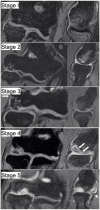

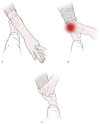
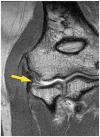





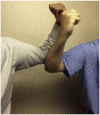

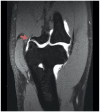
Similar articles
-
Medial elbow problems in the overhead-throwing athlete.J Am Acad Orthop Surg. 2001 Mar-Apr;9(2):99-113. doi: 10.5435/00124635-200103000-00004. J Am Acad Orthop Surg. 2001. PMID: 11281634 Review.
-
The Physical Examination of the Throwing Elbow.Clin Sports Med. 2025 Apr;44(2):129-142. doi: 10.1016/j.csm.2024.05.003. Epub 2024 Jun 15. Clin Sports Med. 2025. PMID: 40021248 Review.
-
Approach to Medial Elbow Pain in the Throwing Athlete.Curr Rev Musculoskelet Med. 2019 Mar;12(1):30-40. doi: 10.1007/s12178-019-09534-w. Curr Rev Musculoskelet Med. 2019. PMID: 30739248 Free PMC article. Review.
-
Pitcher's elbow: medial elbow pain in the overhead-throwing athlete.Curr Rev Musculoskelet Med. 2016 Jun;9(2):207-14. doi: 10.1007/s12178-016-9346-7. Curr Rev Musculoskelet Med. 2016. PMID: 27260266 Free PMC article. Review.
-
Effect of Increased Scapular Internal Rotation on Glenohumeral External Rotation and Elbow Valgus Load in the Late Cocking Phase of Throwing Motion.Am J Sports Med. 2018 Nov;46(13):3182-3188. doi: 10.1177/0363546518800267. Epub 2018 Sep 28. Am J Sports Med. 2018. PMID: 30265820
Cited by
-
Intermediate Outcomes of Medial Ulnar Collateral Ligament Reconstruction Using Gracilis Allograft in Adolescent Patients.Orthop J Sports Med. 2024 Mar 5;12(3):23259671241228868. doi: 10.1177/23259671241228868. eCollection 2024 Mar. Orthop J Sports Med. 2024. PMID: 38449693 Free PMC article.
-
Achilles allograft interposition arthroplasty for the treatment of proximal radio-ulnar stump impingement pain.Shoulder Elbow. 2025 Aug 7:17585732251365579. doi: 10.1177/17585732251365579. Online ahead of print. Shoulder Elbow. 2025. PMID: 40787240 Free PMC article.
-
Extra-articular core tunneling and local autogenous bone grafting for osteochondritis dissecans lesion of the capitellum with intact articular cartilage and subchondral bone deficiency.JSES Rev Rep Tech. 2023 Oct 4;4(1):118-124. doi: 10.1016/j.xrrt.2023.09.005. eCollection 2024 Feb. JSES Rev Rep Tech. 2023. PMID: 38323211 Free PMC article. No abstract available.
-
Valgus-related Elbow Pathology Is Not Associated With Decreased Baumann's Angle: A Case-control Study.J Pediatr Soc North Am. 2024 Sep 14;9:100116. doi: 10.1016/j.jposna.2024.100116. eCollection 2024 Nov. J Pediatr Soc North Am. 2024. PMID: 40432676 Free PMC article.
-
Pediatric thrower's elbow: maturation-dependent MRI findings in symptomatic baseball players.Pediatr Radiol. 2024 Jan;54(1):105-116. doi: 10.1007/s00247-023-05817-0. Epub 2023 Nov 28. Pediatr Radiol. 2024. PMID: 38015294
References
-
- Lawson BR, Comstock RD, Smith GA. Baseball-related injuries to children treated in hospital emergency departments in the United States, 1994–2006. Pediatrics 2009; 123(6): e1028–e1034. - PubMed
-
- Fleisig GS, Andrews JR, Cutter GR, et al.. Risk of serious injury for young baseball pitchers: a 10-year prospective study. Am J Sports Med 2011; 39(2): 253–257. - PubMed
-
- Lansdown DA, Rugg CM, Feeley BT, et al.. Single sport specialization in the skeletally immature athlete: current concepts. J Am Acad Orthop Surg 2020; 28: e752–e758. - PubMed
Publication types
LinkOut - more resources
Full Text Sources

